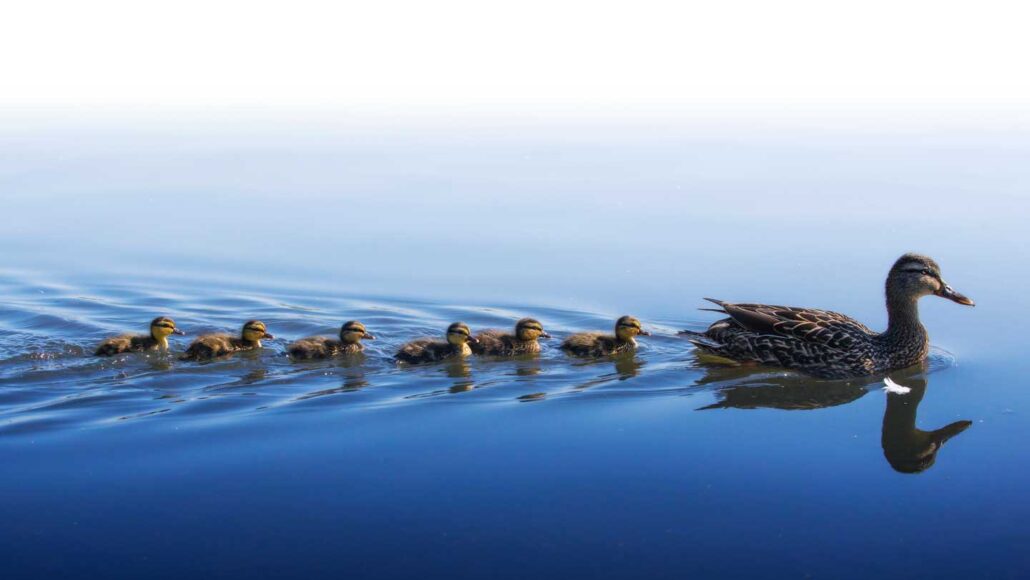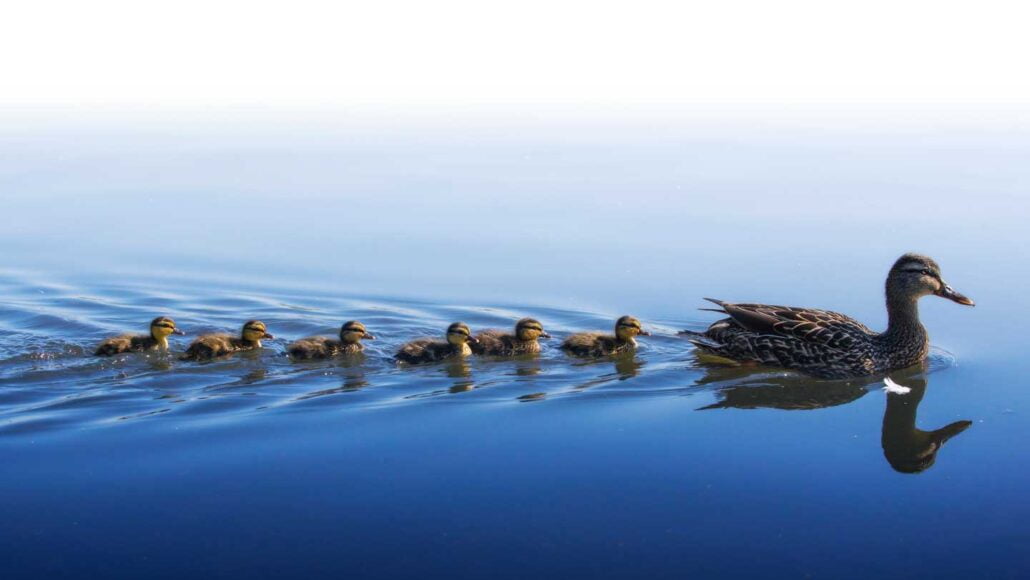
There’s science to having your ducklings in a row.
Baby ducks are known for paddling in an orderly line behind their mother. Now scientists know why. The babies take a ride on their mom’s waves. That boost saves the ducklings energy. Researchers reported the new find in the December 10 issue of the Journal of Fluid Mechanics.
Earlier research studied how much energy ducklings burn while swimming. That showed that the youngsters saved energy when swimming behind mom. But how they saved energy wasn’t known. So Zhiming Yuan made computer simulations of waterfowl waves. A naval architect, Yuan works at the University of Strathclyde. It’s in Glasgow, Scotland. Yuan and his colleagues calculated that a duckling in just the right spot behind its mother has an easier swim.
When it swims on its own, a duckling kicks up waves in its wake. This uses up some energy that would otherwise send it surging ahead. Called wave drag, this resists the duckling’s motion. But wave drag is reversed for ducklings in the sweet spot. They feel a push instead of drag.
Like good siblings, the ducklings share with one another. Each duckling in the line passes along waves to those behind. So the whole brood gets a free ride.
But to reap the benefits, the youngsters need to keep up with their mom. If they fall out of position, swimming gets harder. That’s fair punishment for ducklings that dawdle.
[“source=sciencenewsforstudents”]



